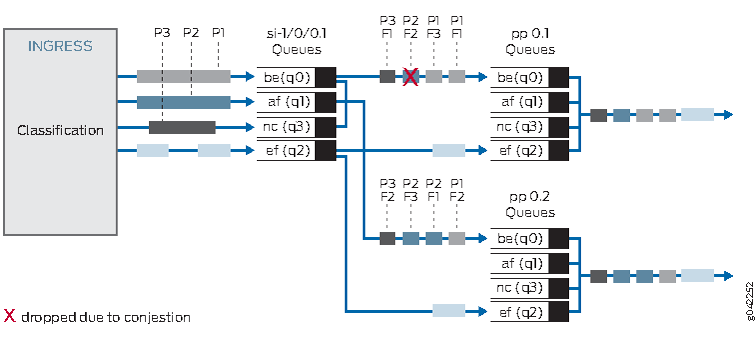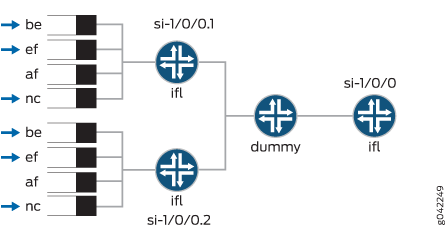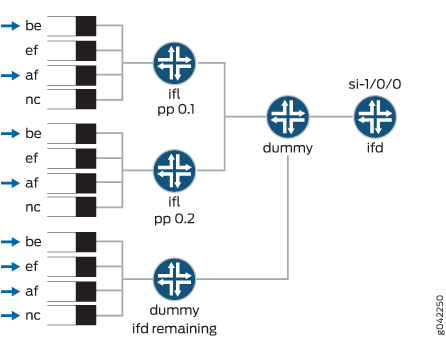Understanding Sequenced Packet Fragment Drops
Multilink PPP (MLPPP) link fragmentation and interleaving (LFI) provides buffering at the receiver side of a link to reassemble MLPPP fragmented packets. Dropping of the packet fragments is a concern because the packet fragments’ remainder consumes valuable bandwidth and buffer space, only to have it eventually being dropped.
The MX Series provides two stages of queuing for packets exiting an MLPPP bundle:
-
The first stage of queuing is performed at the inline services
siinterface. -
The second stage is performed by adding member link scheduler queues.
During the first stage of queuing at the si interface, when exiting from these queues, LFI packets are fragmented
and assigned a sequence number. These fragmented packets are then
distributed to the member links where they are queued for the second
time.
Congestion at the member link queues can result in MLPPP packet fragments being dropped, as shown in Figure 1. Packet flows in the figure use the notation Px,Fx; for example, P1,F1 represents Packet 1, Fragment 1.

Data packet and fragment P2,F2 is dropped due to congestion
at the pp0.1 queues. This occurs after
the sequence numbers have been assigned for packet P2.
In a Broadband Remote Access Server (B-RAS) implementation, the bundle member links share the physical interface with other bundle member links, as well as with PPP subscriber interfaces, causing the physical interface to be oversubscribed and most likely creating congestion.
During the second stage of queuing, member link scheduler queues are added to provide a degree of protection against the port traffic congestion causing fragmented MLPPP packets to be dropped. See Figure 2 and Figure 3 for member link scheduler hierarchies.
All MLPPP packets are sent to queue 0 (be).


